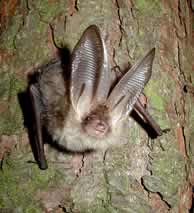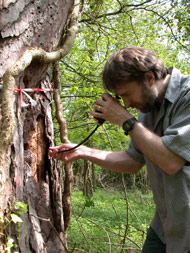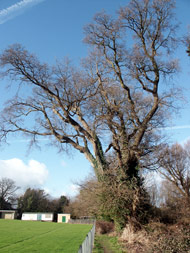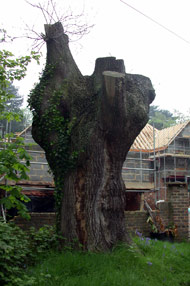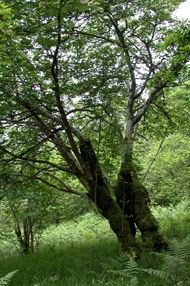|
Unique Career Opportunity...
ArborEcology is a company operating at the cutting edge of tree work and consultancy in the crossover between arboriculture and ecology. With the development of innovative ideas, techniques and working methods, new markets are revealed that require the attention of self motivated, forward thinking, business minded arborists to expand and take on to the next level.
- Are you looking for a business idea to develop with a team who can help you expand your knowledge and professional experience?
- Do you want to explore new ideas, working in a company that appreciates your initiative and encourages continued professional development?
- Are you interested in establishing a new business, but do not know where to start?
We are looking for business associates interested in joining the team to expand the company’s capabilities to achieve the highest standards of professional service and set the benchmark in new areas of arboricultural work.
ArborEcology is an expanding company that is constantly pioneering new areas of arboricultural and ecological business, while also embracing the opportunity to undertake ground breaking research.
Would you like to work with us?
e-mail andrew.cowan@arborecology.com or call: 020 3004 7454 between 8 am & 2 pm Monday to Friday.
Download this page as a pdf
Changes in Wildlife Legislation - May 2007
Changes to the Habitats Regulations are pending because the UK was found lacking in its interpretation of Habitats Directive by a European Court Judgment in 2005. The amended regulations came into force in Scotland this February and in England, Wales and Northern Ireland the changes where due to take effect in early May 2007. However, this date has been postponed again and it is now thought that the changes will take effect some time in August.
Guidance relating to the changes is currently being written but has not yet been completed, pending final legislative wording. In the meantime, below are the proposed key changes.
These changes will affect how we consider the impact of tree work operations on European Protected Species, such as bats, dormice and great crested newts. With bats well known to habitually use trees for roosting, dormice associated with significant areas of ancient woodland and great crested newts are often found in tree stumps. There are significant issues to be considered as the legislation protecting these species is strengthened further.
Key points – Habitats Regulations changes are:
- The ‘incidental result of a lawful operation’ defense will be removed. The intention is to raise the threshold of allowed disturbance to in some way compensate for this, but this can only be determined by case studies and guidance as to how this will work in practice.
- Failure to comply with any conditions of a licence, issued under the regulations, will become an offence liable to a fine not exceeding level 5 on the standard scale (currently £5000).
- In sentencing a person convicted of an offence, there will be an obligation on the courts to have particular regard to the extent to which a person could reasonably have avoided the damage or destruction of the breeding site or resting place concerned. Here the courts could take into account the extent to which operators have followed codes of practice or guidance in relation to the legislation covering European Protected Species.
- Householders will no longer be able to rely on the ‘dwelling house defense’ and will need to obtain a licence for works that may disturb bats or destroy roosts.
- A licence will be required to possess long-term captive bats (for educational purposes).
- Possession of specimens, dead bats or droppings, will require a licence.
Of the points listed above it is number 3 which is of the most significant to consider because it places increased emphasis on the need to follow recognised codes of practice and guidance when considering tree works that could affect European Protected Species such as bats, dormice and great crested newts.
Arboricultural contracts should consider the impact of tree pruning or felling operations on the wildlife habitats associated with the trees and surrounding landscape. This can be done by undertaking a habitat disturbance risk assessment as part of the standard procedural paperwork in preparation for the tree work.
More information will be available from the Bat Conservation Trust (BCT) who can be contacted on 0845 1300 228 or at www.bats.org.uk where you will also find information about this years training courses covering bat awareness for arborists.
Download this news article here
Vagrant or New Species for the UK
In March (2005) it was confirmed that a Pond Bat (Myotis dascyneme) had been found in Kent. The bat was in a wall in Ramsgate and was rescued by Les Hoare of the Kent Bat Group in September last year. Unfortunately the bat died shortly after, although Les found no obvious injuries, and like all dead bats it was sent to the Veterinary Laboratories Agency (VLA) in Weybridge.
Les believed it to be a ‘big Natterer’s bat’, but the VLA staff doubted this and thought is was a Daubenton’s. However, when the identification was checked by Tony Hutson who confirms the species of all bats sent to the VLA, he thought it was a Pond Bat, although as this is not a bat he is familiar with he too thought it best to check. So an expert on the bat species of Europe was asked to confirm the identification.
The big question now is ‘Why was this bat in Ramsgate?’ Could it have flown their from the European main land, or had it been living their for some time, and could there be any more. The Pond Bat is very similar to our native Daubenton’s Bat, both in it’s physical appearance (see below) and foraging ecology, with both species trawling insects from the surface of water.
|
Pond Bat
(Myotis dascyneme)
|
Daubenton’s Bat
(Myotis daubentonii)
|
Head-body |
57-67 mm |
45-55 mm |
Forearm |
43-49 mm |
35-41 mm |
Ears |
16-19 mm |
10.5-14 mm |
Wingspan |
200-320 mm |
240-275 mm |
Weight |
14-20 g |
7-12 g |
With such similarities between the these two species of bat a further question could be have we been miss identifying some of our Daubenton’s Bats in the UK and are some of them actually Pond Bats?

The Bat Conservation Trust: PRESS RELEASE
Embargoed until 0:01 1st April 2005
British bats are flying high!
A report published today by the Bat Conservation Trust (BCT) shows that five bat
species are on the increase in the UK.
Populations of greater and lesser horseshoe bats, Daubenton’s bat, Natterer’s bat and the common pipistrelle have risen steadily since regular monitoring began in 1997, the first evidence that some bat populations could be recovering from historic population declines. These are the latest findings of BCT’s ongoing National Bat Monitoring Programme (NBMP), which is core-funded by the Joint Nature Conservation Committee (JNCC).
“A significant result for bat conservation and the UK’s environment in general is that Daubenton’s bats have been increasing at an estimated annual rate of 4.4% since 1997,” said Dr Colin Catto, BCT’s Director of Conservation & Monitoring. “Daubenton’s bats feed mainly over open water, and their increase provides an excellent indicator that water quality is improving in the UK’s rivers – a fact that is reflected by the Environment Agency’s own statistics1. The findings are also particularly good news for both species of horseshoe bat, as they are among the most threatened mammals in the UK.”
“These population increases reflect changing attitudes and conservation practices to bats and the environment in general. Bats and their roosting sites have now been legally protected for over twenty years, while agri-environment schemes are enhancing the countryside for the benefit of bats and other wildlife. The recent succession of mild winters is also likely to have contributed to the increases, as overwintering survival is higher during warmer winters for bats.”
“We are delighted that there is good news for some bat populations, as it reflects the enormous amount of effort that has gone into bat conservation and monitoring over the last decade,” added Amy Coyte, Chief Executive of the Bat Conservation Trust. “An amazing 14,600 evenings have been spent monitoring bats since 1997, which goes to show that this ground-breaking project would not exist without the dedication of 1,500 volunteers.” BCT is a member of the Tracking Mammals Partnership, which today publishes its first report, ‘UK Mammals: Species Status and Population Trends’. The report includes a summary of the results for these and other bat species, as well as population trends for other mammals, and is available to download from www.trackingmammals.org. The full NBMP Annual Report can be downloaded from www.bats.org.uk.
1 In 2002, 95% of rivers were of good or fair quality, compared with 90% in 1990 (Environment Agency, www.environment-agency.gov.uk).
This news item can be downloaded as a pdf
Treework destroys a bat roost – on the day that a nation-wide police protection campaign, ‘Operation Bat’, was launched .
“The council is now facing legal action after taking a chainsaw to the roost on Wednesday, June 30 th.” Clare Coleman, Exclusive for the Basingstoke Observer, front page news, on July 8 th 2004.
It appears that the bats were discovered in a hollow branch of an old lime tree. Tree felling and pruning works were being undertaken on a group of trees in the centre of the village. The work had been organised by the council as a result of a, tree hazard assessment, health and safety inspection.
The branch containing the roost site had been removed in it’s entirety by the contractors, but it was not until they cut it up on the ground that the roost site was found. The arborist cut through the cavity using a chainsaw to discover that, in side was a maternity roost of bats, thought to be either Daubenton’s or Natterer’s bats. The contractor working on site reported the incident and the council contacted an independent environmental consultant, Lee Morgan, of LM Environmental Consulting.
Lee Morgan reported that at least one bat was actually killed by the chainsaw, some few away, while several more were rescued and put back in the branch cavity. The log was then strapped back together and, using a cherry picker, the section was carefully lifted back into the tree and secured to a large limb. Luckily, the fleeing adult bats were observed returned to their babies later that evening. However, Lee believes the ‘bat-astrophe’ could have been easily prevented. He said: “The council had a survey done by the Tree Advice Service, who picked out two trees as having advanced root rot, and recommended the work should be prioritised. However, the report also stated that it should be planned to avoid times when birds are nesting and that a bat survey was needed on significant tree hollows. It wasn’t done!”
PC Geoff Culbertson, a Wildlife Crime officer, said Hampshire Constabulary were looking into the incident and considering the possibility that offences had been committed.
See below for more information on Operation Bat.
This news item can be downloaded as a pdf

June 2004
The Bat Conservation Trust: PRESS RELEASE
Police and batmen join forces to tackle bat crime
The Bat Conservation Trust welcomes the launch of Operation Bat, a new police initiative aimed at tackling the worrying number of crimes against bats in the UK.
Operation Bat, launched today (30 th June 2004) by the police, will provide a standard operating procedure for the police to deal with bat–related offences and assist in preventing bat crime. Bats are protected by law because their numbers suffered a significant decline in the 20 th century, so the Bat Conservation Trust welcomes this ground-breaking initiative. ( See Bats and the Law )
This project comes at a time when bats have been recognised as a Wildlife Crime Conservation priority and is a direct result of the empirical evidence provided by last year’s ‘Bat Crime’ report, published by the Bat Conservation Trust and RSPB. The report recorded that 144 bat offences had been committed in the UK over two years, a number far higher than anticipated but now suspected to be only the tip of the iceberg. ( Download )
“Builders and developers were responsible for over two-thirds of the offences identified by our ‘Bat Crime’ report, but if bats are taken into consideration before development starts there is absolutely no need for a crime to occur,” said Amy Coyte, Chief Executive of the Bat Conservation Trust. “We are delighted, as this innovative police partnership initiative will help to deter bat crime and therefore save hundreds of bats each year.”
Chief Constable Richard Brunstrom of North Wales Police, and spokesman on wildlife issues for the Association of Chief Police Officers (ACPO), was responsible for bats becoming a police priority in conjunction with the Joint Nature Conservation Council (JNCC). “The emphasis of Operation Bat is on prevention rather than enforcement,” he said. “The overall aim of it is to raise awareness of the legislation that protects bats so as to provide a clear message that bat crime is police business and will not be ignored.”
Operation Bat is a collaborative project between the police, the Bat Conservation Trust and the Statutory Nature Conservation Organisations (English Nature, the Countryside Council for Wales and Scottish Natural Heritage). “This partnership aims to work collaboratively to prevent bat crime occurring in the first place, so that our work to conserve bats is not channelled into reactive and resource-hungry enforcement issues,” concluded Amy Coyte, Chief Executive of the Bat Conservation Trust 020-7501-3622.
January - February
2003
CHECK THE COMPETENCY
OF CONTRACTORS, HSE WARNS DUTY HOLDERS
A recent prosecution taken by the Health and Safety Executive
(HSE) has highlighted the need for those involved in tree-felling
operations to carefully check the competency of the contractors.
On 8 January 2003 in Leamington Spa Magistrates' Court a building
and property development firm pleaded guilty to a charge under
the Health and Safety at Work etc. Act 1974 (HSW Act), Section
3(2). P and B Carpentry and Builders (trading as B and B Homes)
was fined £2,000, plus £664 costs, for failing
to check the tree surgeon involved was competent to carry
out the operation in question.
The tree surgeon felled a large branch from a 20-metre poplar
tree in an uncontrolled manner. It fell across a neighbouring
garden demolishing a fence panel. The neighbour had been in
the garden just half an hour earlier, playing with her 20-month-old
child. No warnings had been given to keep children or pets
inside.
Speaking after the case, Adrian Hodkinson of HSE's Agriculture
and Wood Sector said: "This incident and prosecution
sends out a clear message that clients engaging contractors
to undertake tree work need to carefully check they have the
necessary skill and competence. Tree work is hazardous; to
be done safely it requires properly trained and experienced
people. "It would have been advisable for the client
to obtain two or three detailed quotes. And the client should
have asked for details of how the work was to be done and
checked that the contractor held chainsaw certificates of
competence relevant to the task. "I would encourage all
clients to examine the qualifications and skills of people
they engage. Arboricultural trade associations can supply
details of approved contractors and information to help you
choose a competent tree work contractor. It is not surprising
that the job went wrong and it is very fortunate that no-one
was injured."
http://www.hse.gov.uk/press/2003/e03013.htm
|
